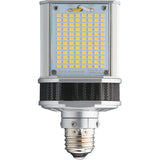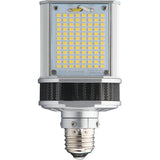Is Overall Energy Efficiency in Lighting a Pipe Dream?
Posted by Nick on for ProLampSales
A study by Rutgers University indicates that cheaper, more efficient lighting may lead to more lighting being used by consumers and institutions. One likely result -- people will use more lights if they are cheaper to operate, which won't reduce the overall energy usage.
According to an article from InsideClimateNews summarizing the findings, the cost of LEDs will keep coming down due to a switch from rare earth elements (REEs) to earth-abundant materials that are used in the phosphors that shift the blue light of most LEDs to white lite.
The Paradox: More Efficient Lights = More Lights Overall?
Moving from laboratory research to commercial production is always challenging but even if the new technique does significantly reduce the cost of highly efficient LED lights, their use won’t necessarily result in energy savings. A number of recent studies have in fact found the opposite. Known as the "rebound effect" they show that reductions in the cost of lighting result in increased consumption as people use more and more lights.
In my own house, I have a couple of light fixtures in the kitchen and living room. They can hold up to three bulbs, and I have CFLs in two out of the three sockets in each fixture. If I did a complete retrofit to LED, I'd likely put three bulbs in each fixture to improve the quality of light.
But three 10-watt LEDs replacing two 14-watt CFLs isn't going to save me any money on energy. Quite the opposite, in fact, if I start using 30 total watts compared to the 24 watts the current bulbs use.
Another conundrum is how versatile LEDs are. I never considered using string lights to provide accent lighting around my living room or the deck in the backyard, but color-changing RGB strip lights would be really cool. But adding those lights would be an increase in power usage, albeit a small one.
And with the holiday season only a few short months away, let's not even get started on those neighbors who fill their front yards with enough Christmas lights for their homes to be visible from space. With LEDs drawing less power overall, the ability to load a yard full of lit-up reindeer and snowmen becomes a simple matter of space, rather than the risk of blowing fuses.
More Lighting a Trend Over Hundreds of Years
A study from earlier this year (PDF) found that, as the cost of light comes down, more of it is consumed by people around the world. Just in the last year, the cost of LED bulbs has decreased by up to 90%. In the short term, this will mean energy savings, but the lower cost and greater range of applications of LEDs is likely to erode the efficiency savings.
Rather than energy savings due to switching away from incandescent and halogen technology to LED, the "rebound effect" is likely to create more demand for light. While LEDs are much more efficient, doubling or quadrupling the amount of light in a space to improve light quality or provide more lighting options is not a recipe for aggressive energy savings.
Looking at the current transition from incandescent lights to CFLs and ultimately LEDs, the authors concluded "there is a massive potential for growth in the consumption of light if new lighting technologies are developed with higher luminous efficacies and lower cost of light."
Humans Attracted to Light
We know that insects are attracted to light, but hundreds of years of history and the development of artificial light has shown that humans are just as attracted to it. Consistent lighting is one of the foundations of our modern civilization: without it, offices would be too dark to work in on cloudy days, night shifts at manufacturing plants would be an impossibility, and even driving after the sun goes down would cease to exist.
As the cost of lighting goes down and the applications increase, it's likely many people will increase the quantity and quality of the light they use, showing they prefer better lighting to simple energy efficiency and savings calculations.
- Posted in Energy Efficiency, LED
Featured Products (View All)
0 Comments




